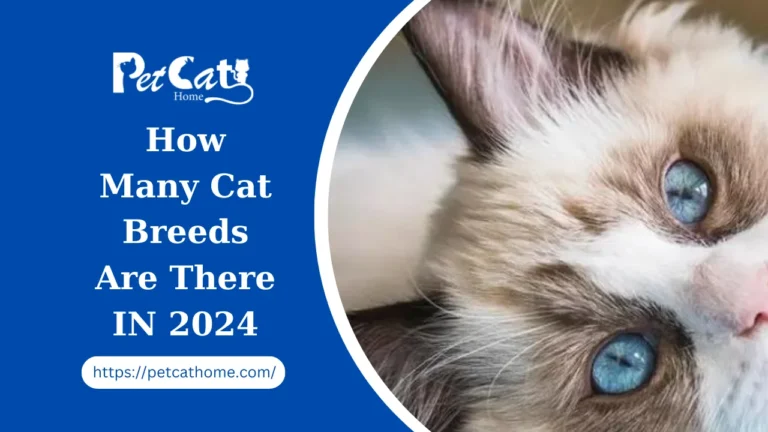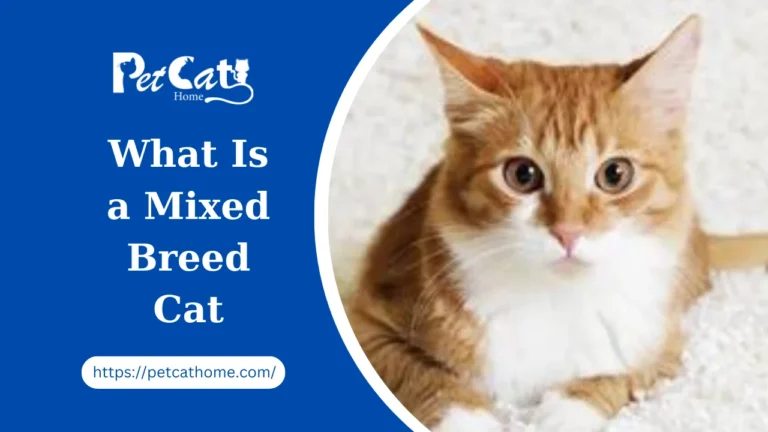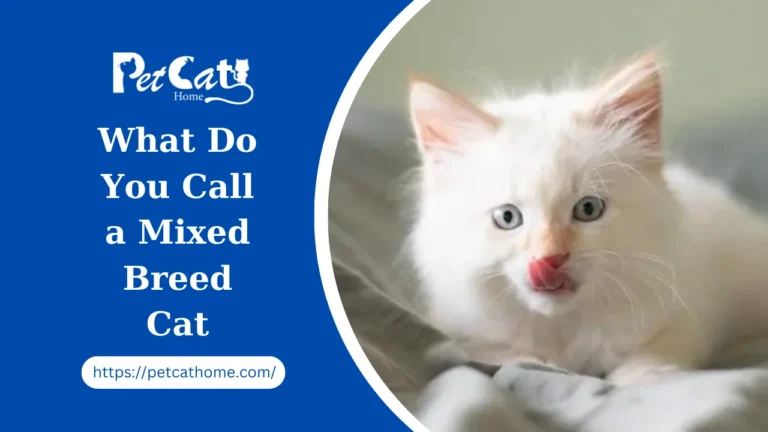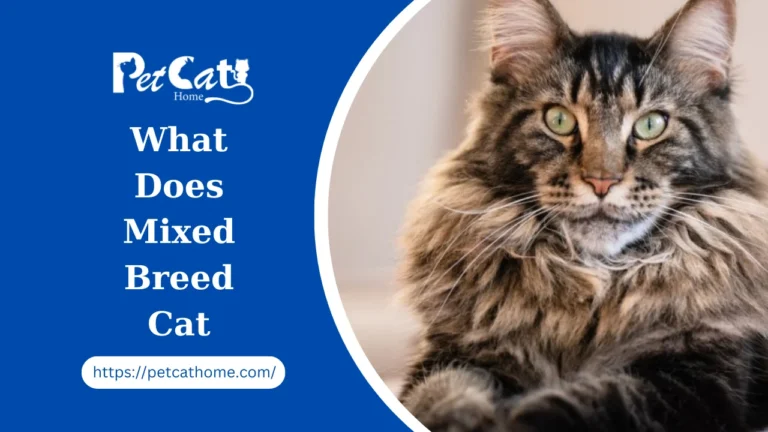How Many Breeds Of Cats Are There In The World

Every cat owner believes their cat is special, and yours is no exception. If we look at how they behave, then yes, they are. They unusually convey their emotions. A cat will use several expressions to show affection, such as napping, playing with a ball of wool, etc. Each gesture is different and distinctive from the others, and many of them are made to appease their owners.
However, cats come in a variety of breeds. Depending on their cat’s DNA, that is. These all descended from their forefathers. A cat’s traits might vary, such as its tufted ears, golden, brown, or green eyes, loud or strident meow, and more. How many cats are there in the world, though, is the question. Let’s investigate that in this piece.
For millennia, people have coexisted with cats, who come in a wide variety of varieties and captivate us with their distinct personalities and traits.
How many cat breeds are there globally?
As per the National Geographic survey, cats adore having people around them all the time. They consume rodents that pose a hazard to the grain stocks. Cats have always loved being around people, whether that was eight thousand years ago or not. But in the 1800s, attention shifted to cats with distinct personalities and looks.
Some cats, such as Egyptian Mau, bear a resemblance to their wild predecessors. They come from the Middle Eastern deserts, sometimes called the snow-covered Maine Coon. The remaining cat breeds are the outcome of affection and human interaction. Consequently, the purring breeds of cats have been created.
In contrast to dogs, cats haven’t changed all that much thus far. Take the family of wild cats who used to frequent the historic grain farms. There is no specific purpose for cat breeding, such as hunting or herding. Similar to a dog, the differences in cats are more subtle. For this reason, there isn’t much of a distinction between a Rottweiler and a Beagle. In the view of the common observers, anyway!
The number of cat breeds in the world is a topic of some disagreement. Different amount of breeds are recognized by different cat registrations and organizations. Major cat societies recognize between 60 and 70 official breeds of cats worldwide. However, this number can change based on the standards applied to identification and categorization. The diversity of the feline world is further increased by the continued use of breeding techniques and the introduction of novel qualities, which result in the development of new cat breeds.
How many types of cats are there?
The number of different breeds or sorts of cats varies on how they are defined and categorized, hence there is no exact number. But when it comes to officially recognized cat breeds, well-known cat clubs such as the Cat Fanciers’ Association (CFA) or The International Cat Association (TICA) typically acknowledge between 60 and 70 different cat varieties globally.
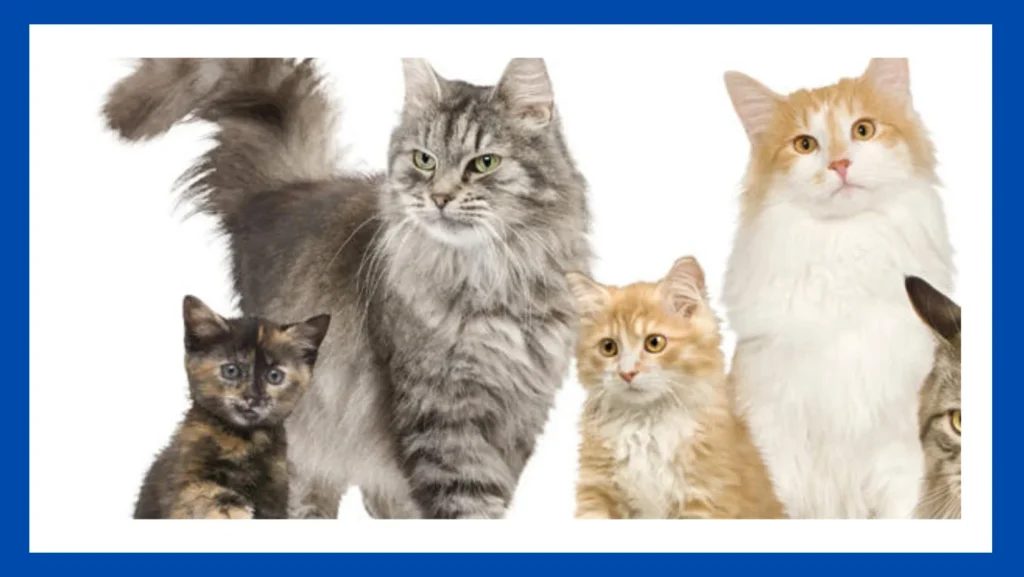
Numerous traits, such as varying fur lengths, patterns, colors, body types, and personalities, are exhibited by these breeds. Furthermore, there are many variations and local populations of cats that may not meet official breed requirements but yet have distinctive characteristics. This variety highlights the wide range of cat kinds that exist outside of officially recognized breeds.
The number of cat breeds of cats that exist in the modern-day varies from source to source. Therefore, the figures will differ depending on the website you visit to find the data. Both private and international cat registration groups make breed distinctions. This, however, is dependent upon the characteristics of certain cat breeds. Nevertheless, the total number of cat breeds is consistently less than the total number of dog breeds.
Only fifteen breeds of cats are included in Encyclopedia Britannica, based on our records. Furthermore, there are roughly 71 different varieties of cats recognized by the International Cat Association. In actuality, this is the largest cat breed registration in the world. Numerous other governmental and non-governmental institutions conduct in-depth studies as well.
Here’s an illustration. The largest organization in America for cat registration is the Cat Fanciers’ Association, or CFA. In 2019, it identified approximately 44 different breeds of cats. One reputable cat registration group member is the Federation of International Feline. It lists approximately 48 different cat breed varieties from more than 40 nations. These breeds are further divided into four distinct categories by them.
How many breeds of cats are there in the world?
The number of cat breeds in the world isn’t exactly agreed upon because different cat groups and organizations recognize different numbers of cats differently. Generally speaking, though, there are between 60 and 70 recognized cat breeds worldwide. The traits of these breeds range widely, encompassing differences in body types, fur length, coat patterns, colors, and temperaments.
Furthermore, continuing breeding initiatives and the introduction of novel characteristics support the ongoing development and possible spread of recognized cat breeds.
Breeds of cats are calculated differently by associations. The fact that each organization has unique parameters is among the easiest explanations. Furthermore, not all registries count non-pedigreed cats when determining the total number of cat breeds. There are no acknowledged parents for these non-pedigree cats. These breeds have several generations of history. Once more, some organizations include different cat breeds in a single category. Other associations, however, set them apart within their respective groups. Because of this, each registration has a varied number of cat breeds and their computation differs accordingly.
How about new cat breeds? How do they find their name on the list?
Some procedures and requirements established by different cat groups and registries must be met to add a new cat breed to the approved list. To introduce a new breed, a breeder usually takes the following actions:
Breed Development: To establish a unique breed with standardized traits, breeders match cats with preference for particular traits.
Breed Standard: They create a standard for the breed that outlines the traits that set this new breed apart, such as temperament and physical attributes.
Documentation and Pedigree: To prove the consistency and purity of the breed, the breeder keeps track of the cats’ ancestry and pedigree.
Presentation to Cat Associations: The new breed is introduced to organizations such as TICA or CFA by the breeder or breed enthusiasts. They include comprehensive details about the breed standard, background, and traits.
Evaluation and Recognition: Within these societies, knowledgeable breed committees examine the traits of the breed to ascertain whether it satisfies the requirements to be recognized as a separate breed. The new breed might be included in the association’s list of recognized breeds if it is accepted.
Naming the Breed: After a new breed is identified, breeders frequently provide a name for it. To prevent confusion with other existing breeds, the name should be unique and reflect the breed’s heritage, qualities, or specific attributes.
For a breed to be recognized and included in the list of recognized cat breeds, it must show that it is consistent, has distinct qualities, and follows rules.
You must be asking now, what would happen if some new breeds of cats were added to the registry? Let’s tackle the inquiry now. The cat breed lists are often unchanging and remain the same across all organizations. However, there are instances when new breeds are created, and these require certification. Two new breeds have been added to the Cat Fanciers’ Association’s 2018 roster. Lykoi is one of them and Khao Manee is the other.
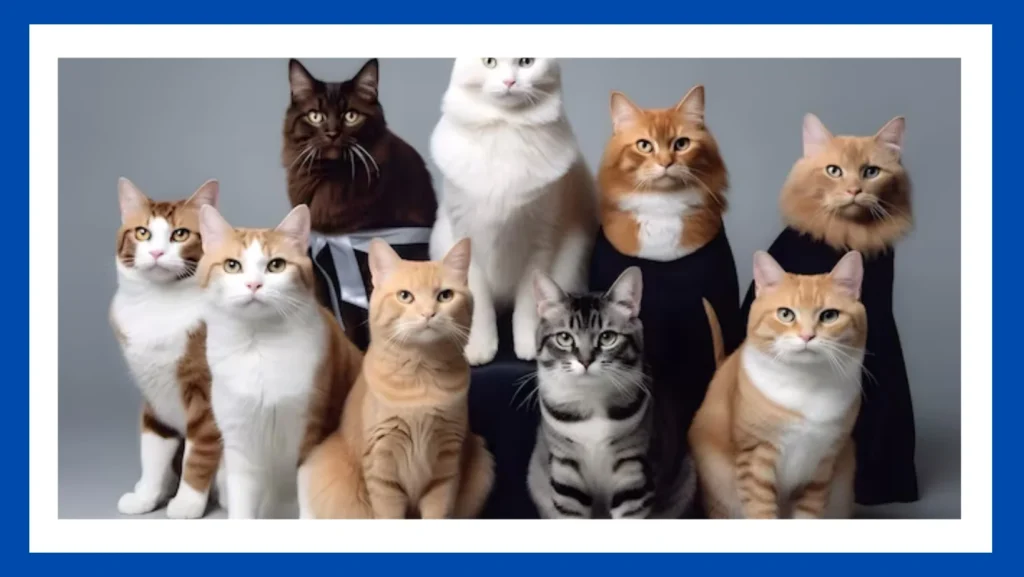
Similar types of features can be found in the genetic architecture of cats. As a result, new cat breeds can be identified. These characteristics are occasionally misinterpreted as a general predisposition for a certain illness. The controversy over breeding recognition can stem from this misperception of the different features. Strict guidelines are enforced for various breeds by the CFA and other private or non-governmental groups. They take this action to guarantee the cats’ well-being and the absence of any inherited genetic problems.
Which is the best type of cat?
Cats can have interesting stripes, five toes, dark red tongues, or emerald eyes. But the best kind of cat is the one who craves human affection and cuddling. While many of the cats in cat homes may not be purebred, this is not their fault. Even they deserve a lasting home and an incredible mom like you.
Are you interested in learning more about adoption or do you intend to adopt a new cat? Spending some time learning about the cat’s breed is a smart idea. You can speak with a reputable, knowledgeable veterinarian who can tell you more about the animal. You can also learn about a pet’s behavioral tendencies from a specialist.
The “best” kind of cat to own depends on personal tastes, lifestyle, and requirements for a feline friend. There are many different breeds of cats, and each has special qualities, personalities, and peculiarities of its own. Certain breeds may be preferred for their looks by some, while others may place more value on characteristics like activity level, temperament, or grooming requirements.
Certain well-known breeds, like the Maine Coon, are renowned for their gregarious and amiable disposition, and Siamese cats are noted for their talkative and cuddly dispositions. Bengals are valued for their lively and energetic nature, while Persians are prized for their long, opulent coats and serene personality.
A cat that fits someone’s lifestyle, tastes, and ideal qualities in a feline friend may be the “best” cat for them. When choosing which breed of cat could be the greatest fit, it’s important to do your homework, spend time with cats, and take into account things like energy levels, grooming needs, and compatibility with the household.
Did you know there are mixed breeds in cats too?
Yes, cats do come in mixed breeds! Mixed-breed cats are a blend of different breeds or lineages without a definite pedigree; they are also known as domestic cats, shorthairs, or longhairs. These cats have distinct gene combinations that they inherited from their varied heritage.
Each mixed breeds of cats is unique and special due to the great diversity of physical traits, coat patterns, colors, and personalities they can exhibit. Because of their distinct qualities and appeal, many mixed-breed cats are treasured as cherished friends. Their varied backgrounds add to their originality.
Even though these cats lack the distinctive characteristics and consistency of purebred cats, they frequently possess a combination of traits that make them lovable and treasured members of homes all over the world.
You can also look at the cats that fall under the mixed breed category. A variety of mixed-breed cats may be available in the cat house for adoption by kind pet owners. A startling genetic characteristic shared by purebred cats is displayed by some of these mixed-breed cats. However, genetics does not ultimately determine a cat’s needs. A cat’s disposition, sweetness, amiable outlook, and stunning attractiveness can all make her endearing.
Therefore, before you decide to get a cat for your home, consider all of these issues. It is advised that you visit your neighborhood shelter and look for a cat that seems to get along with you and work well with you.
How Many Cat Breeds Are There in the World? (2024 Update)
Most people can name a few dog breeds, like Pit Bulls, Labrador Retrievers, and Golden Retrievers. On the other hand, relatively few individuals are aware of the various cat breeds, much less be able to recognize one just by looking at one.
Cat breeds do exist, albeit in smaller numbers, even if discussing them is far less prevalent. Similar to dogs, cat breeds can predict a cat’s personality and prevalent ailments; nonetheless, your cat’s upbringing is the most important factor.
Continue reading if you want to find out more about different breeds of cats. This page examines the quantity of wild and domesticated house cat breeds, among other topics. Let’s get our hands dirty with this.
How Many Domesticated House Breeds Of Cats Are There?
Depending on which cat association you look at, there are just 40 to 71 cat breeds, compared to about 200 dog breeds that have been domesticated. Similar to dog breed associations, these cat associations specify breed criteria and hold cat competitions.
The Cat Fanciers’ Association and the International Cat Association are the two most reputable cat associations. The International Cat Association recognizes 71 cat breeds, but the Cat Fanciers Association only recognizes 42. It’s safe to estimate that there are between 42 and 100 cat breeds in the world, not counting the additional experimental varieties that are not officially recognized.
As we have already discovered, there are undoubtedly more breeds even if the ones mentioned above are some of the most well-known worldwide. Even though they have been domesticated, some of these cats—like the Maine Coon—remain similar to their untamed forebears. Conversely, several cat varieties just resemble cuddly, plush animals.
What Breed Is My Cat?
It is impossible to identify the breed of your cat without seeing it, but our best guess is that it is domestic short hair or long hair. 95% of domestic house cats in the US belong to either the domestic long-haired or short-haired breeds.
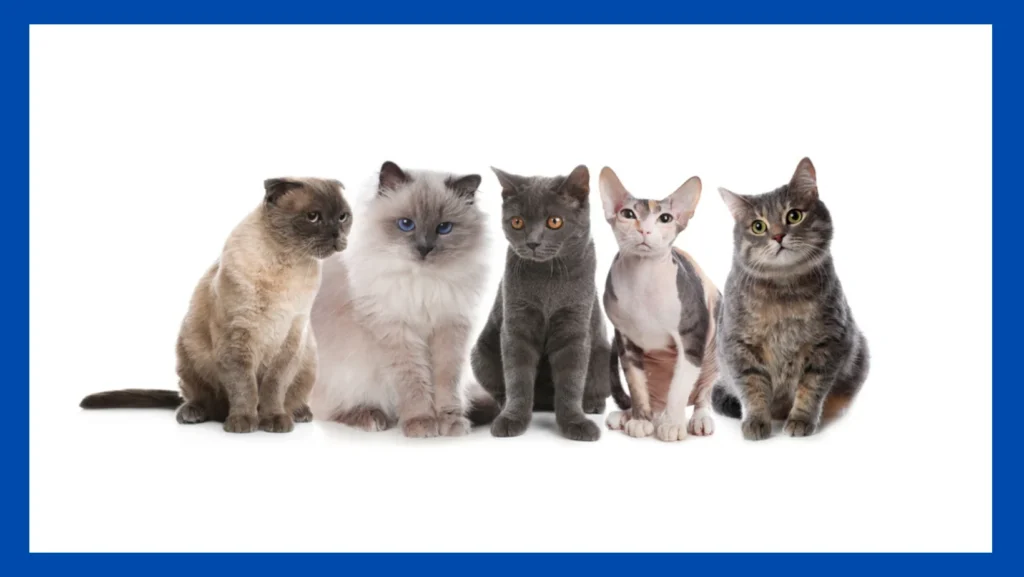
It’s crucial to remember that domestic cats with long and short hair are different breeds from American Shorthair cats. It’s interesting to note that the most popular breeds of cats only refer to the domesticated cats with whom we are most familiar; it is not recognized in terms of lineage.
Can More Breeds Be Added?
Although new breeds are theoretically admissible, the majority of registered breeds remain essentially unchanged. For instance, in 2018, the Cat Fanciers’ Association approved the registration of Khao Manee and Lyokoi.
Cats are still not added to the registry carelessly. Since all cats come from a common ancestor, there is much discussion on whether new breeds are truly distinct from one another or are just extensions of the older line. This also explains why the number of recognized cat breeds listed by various registries varies.
Why Are There Fewer Breeds of Cats Than Dog Breeds?
The only reason there aren’t as many cat breeds as dog breeds is that people haven’t taken the time to domesticate them for specific uses. Many dogs were bred expressly for tasks like hunting and herding, as you are undoubtedly aware. Australian Shepherds were bred specifically for herding, for example. As a result, there are many different dog breeds available.
In contrast to dogs, cats have not been bred for specific roles. They therefore share a great deal more genetic similarities with wild cats than with dogs. It also implies an overall decrease in the number of breeds of cats.
How Many Wild Breeds of Cats Are There?
It can be interesting to learn about wild cat breeds, even if the cats you own are tamed. The long-lost relatives of domesticated cats are wild cats. Although their genomes have been modified to make them more suited to coexist with humans, their genetic makeup is quite similar. This involves more submissive dispositions and capacity for memory formation.
Strange as it may seem, the number of wild cat breeds is comparable to that of domesticated cats. Numerous wild cat associations estimate that there are roughly 36 different kinds of wild cats around the globe. This includes the jaguar, cheetah, and African golden cat, among other animals.
The precise number of wild cats in the wild is a topic of contention, just like with domesticated house cats. For instance, whereas most registries only identify 36 species, some mention 40. The fact that there are far more wild cat breeds than domesticated house cat varieties is an interesting observation.
Many Breeds Of Cats Are There In The World
FAQs
Are all cat breeds recognized universally?
Different cat groups have differing standards for recognition, which causes differences in the recognized breeds.
How do I choose a cat breed that suits my lifestyle?
When choosing a breed, take temperament, activity level, and grooming requirements into account.
Are mixed breeds of cats as unique as purebred cats?
Cats of mixed breeds have a certain allure and frequently display distinctive traits that they have inherited from different breeds.
Are there efforts to conserve rare cat breeds?
To save unusual cat breeds from going extinct, there are programs in place to protect and promote them.
Can new breeds of cats created intentionally?
Yes, deliberate breeding efforts emphasize particular cat features to produce new breeds.
Conclusion
The variety of breeds of cats demonstrates how human interference and cat evolution have shaped these cherished animals. Our appreciation of each breed’s distinctiveness is enhanced when we are aware of its diversity.


